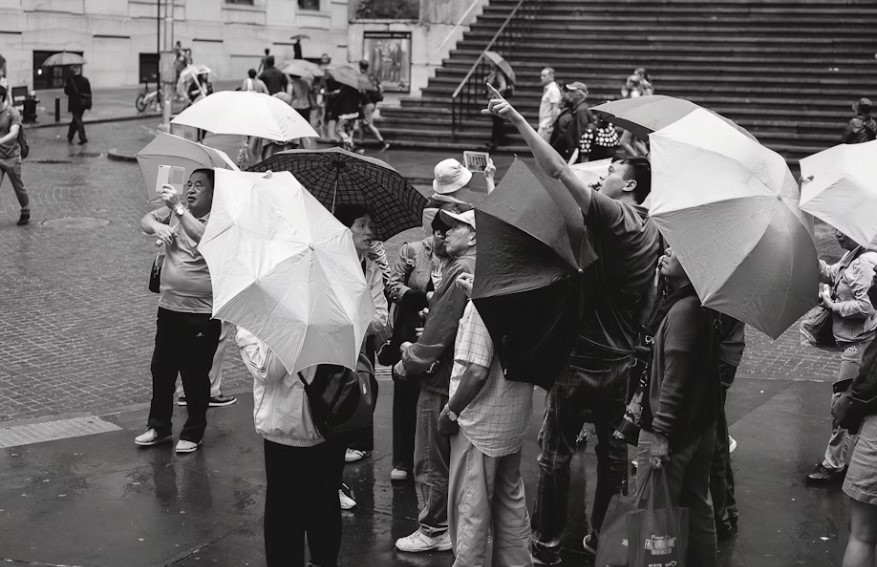Public outrage spreads fast these days. It might start with a hashtag, a viral clip, or an explosive headline—next thing you know, everyone’s forming an opinion. But when that heat hits someone charged with a crime, it can affect their chances of a fair trial.
This is where the power (and peril) of public opinion comes into play. It starts the moment law enforcement steps in, and that surge of attention can shape everything that follows. That’s why working with a criminal defense team that understands both court strategy and media dynamics is vital. If you want a legal partner who can handle media scrutiny and courtroom pressure with equal finesse, be sure to visit website.
Now: let’s unpack how public perception travels, where it trips up justice, and why defense teams that bridge traditional lawyering with media awareness can help keep things on track.
- The First Wave: Headlines Before Hearings
- Social Media Echo Chambers
- The Danger of Trial by Media
- Jury Bias and Cognitive Anchoring
- How Strategic Defense Counters Public Opinion
- Not Just a Courtroom Battle—But a PR One Too
- Ethical Boundaries: When Talking Hurts
- Media Strategy Doesn’t Replace Courtroom Work
- What to Look For in a Defense Team
- Pulling It All Together
- Closing Thoughts
The First Wave: Headlines Before Hearings
Media coverage often starts before any trial begins. Think press conferences, initial police statements, and leaks. Reporters race to publish. Meanwhile, the public absorbs. Context gets lost. One-sided quotes get amplified. That’s how a story takes on a life of its own before anyone sets foot in court.
Even subtle wording can skew things:
- “Suspect wanted in connection with…” sounds more ominous than “Person taken in for questioning…”
- “Victim alleges” is stronger than “someone reported…”
Once headlines are out there, they latch onto memory. Even if charges are dropped or evidence weakens, the narrative lingers.
What this means for defendants: Their reputations might be damaged before they even enter a courtroom. Their names go out alongside negative associations. In some cases, that can ripple into jury pools—and even judges may be influenced, consciously or not.
Social Media Echo Chambers
Social media supercharges news. A 10-second clip can go viral. Users add comments, opinions, memes—transforming a factual report into a sensational story.
Algorithmic sorting can make things worse. People tend to see what aligns with their views. If someone shares one story with a strong headline, their network sees it—and so on. Soon, social opinion hardens into a perceived fact.
And now no one’s asking questions like, “What’s the full story?” or “What evidence supports it?” The crowd has spoken—even before evidence is introduced in court.
The Danger of Trial by Media
Let’s talk about “trial by media.” This is when the public acts like a jury. Court of public opinion replaces courtroom. And once someone is seen as guilty, reversing that takes more than evidence—it takes enormous effort.
- Media outlets chase clicks, and sensational headlines sell.
- People share without verifying context.
- Innocent until proven guilty? That principle gets buried.
For the accused, that means reputational damage, loss of employment, fractured relationships—and even threats. Suddenly, a simple accusation has become a public conviction.
Jury Bias and Cognitive Anchoring
Even ideal jurors can be influenced by early coverage. Psychologists call it anchoring bias—our minds latch onto first impressions. If that impression is “guilty until proven innocent,” everything that follows is judged in that light.
Courts try to minimize this:
- Change of venue to shift jury pools.
- Gag orders to limit public commentary.
- Jury questionnaires to screen for bias.
But social media doesn’t respect court orders. Jurors may still see coverage or discussions online. Even if they don’t participate, existing narratives can slip in. This is why defense teams aim to control the narrative early or push for a media strategy that prevents uncontrolled spillover.
How Strategic Defense Counters Public Opinion
So what’s the solution? A smart defense team does more than file motions. They build an approach that weaves in real-time narrative control.
- Proactive media engagement: Offering timely, accurate updates to the press. It keeps the story balanced.
- Press releases or interviews: Done carefully, these can highlight the evidence, cast doubt on weak claims, and remind the public of due process.
- Social media monitoring: Identifying false narratives or misleading posts—and addressing them promptly.
- Prepared public statements: Designed to be respectful to victims and authorities while reminding everyone that “all charges should be evaluated in court.”
The goal: shape public perception in parallel with court proceedings. Not as a distraction—but as a shield.
Not Just a Courtroom Battle—But a PR One Too
In high-profile cases, public relations is part of defense.
Think of it this way: traditional defense handles the evidence, legal motions, witness preparation, and trial strategy. The PR side handles perception. It’s not cheap spin—it’s accountable, fact-based messaging designed to protect a client’s right to a fair trial.
It’s why you see top criminal defense teams holding press briefings, updating websites with case developments, or even using targeted social ads to reach local communities. The goal: prevent misinformation, steer narrative, and help neutralize biases before a jury is selected.
Ethical Boundaries: When Talking Hurts
Public relations in criminal defense isn’t legalized spin-doctoring. It must stay within ethical lines:
- Avoid disparaging victims.
- Stick to what’s known—no inventing facts.
- Respect gag orders and court restrictions.
- Don’t coach jurors or influence testimony.
The goal isn’t to manipulate public emotion. It’s to ensure accurate information is available—so reporters and viewers don’t rely solely on sensationalism.
Media Strategy Doesn’t Replace Courtroom Work
Here’s a key point: no amount of media outreach can substitute for solid legal defense. Evidence matters. Examination of witnesses matters. Cross-examination matters. Preparation matters.
PR is like insurance: it protects against collateral damage. But it isn’t the fight itself. The legal case must be rock-solid. That means:
- Early case assessment.
- Filing suppression motions for illegal searches.
- Challenging unreliable evidence.
- Skilled courtroom presentation of facts.
That’s why seasoned teams pair legal expertise with media experience. They recognize the battlefield is both inside the courtroom and out.
What to Look For in a Defense Team
If you or someone you care about faces criminal charges and eyes are on the case, here’s what matters:
- Legal pedigree – Trial-tested attorneys who’ve handled serious charges.
- Media know-how – Lawyers who’ve worked with or within media contexts, understand press cycles, can prepare statements.
- Communication style – Clear, accessible messaging; no legalese.
- Integrated strategy – Courtroom motions coordinated with public engagement.
- Empathy-first approach – Respectful of victims, law enforcement, community. Professional yet human.
That balance inspires credibility in court and trust in the public eye.
Pulling It All Together
Here’s the big picture:
- Step one: Acknowledge that media attention accelerates quickly.
- Step two: Control what you can—prepare statements, brief attorneys, set narrative tone early.
- Step three: Build a legal defense rooted in evidence and courtroom strategy.
- Step four: Match legal moves with timely communication—press releases, interviews, or monitored media.
- Step five: Be transparent, ethical, and responsive—but stay focused on constitutional rights and due process.
That combo puts defendants on a stronger footing—both legally and reputationally.
Closing Thoughts
Public opinion isn’t just theater—it’s a force. It can tilt the scales before trial. And once bias sets in, reversing it takes so much more time, money, and energy.
That’s why people choose criminal defense teams that don’t just defend—they manage. They respect court process and control the conversation. Together, they reduce the risk of reputational damage, biased jurors, and an unfair trial.
At the end of the day, justice comes from fact-based argumentation—not public frenzy. A strong defense acknowledges at the outset how the media cycle works. Then it prepares accordingly. That approach helps ensure guilt or innocence is determined by facts in court—not by the number of online shares or trending tags.
In a world that reacts first and thinks later, a thoughtful, strategic, dual-track approach gives clients their best shot—both in court and out.


